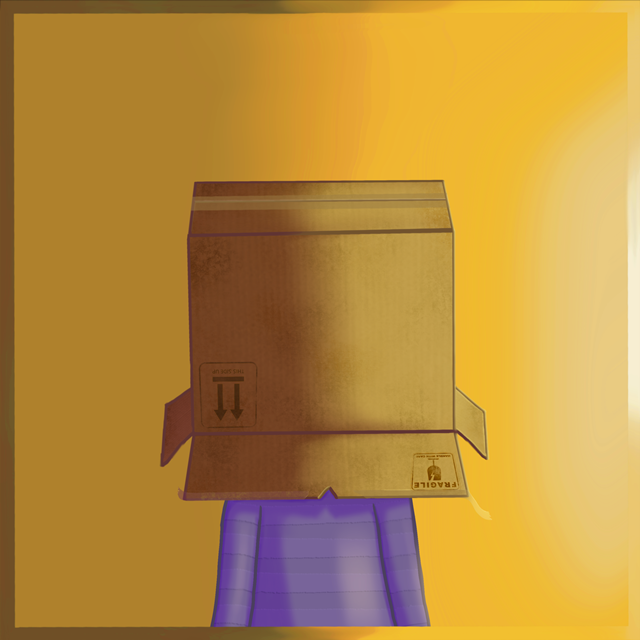Definition:
“Box of Shame” is a metaphorical and visual representation of shame, embarrassment, or a desire to hide from judgment, usually by wearing a cardboard box over one‘s head or simply hiding in a cardboard box.
Etymology:
The word “box” comes from the Latin “buxus,” which originally referred to the boxwood tree, and later evolved in Old English to mean a container. “Shame” comes from the Old English “scamu,” meaning disgrace or dishonor. The phrase “Box of Shame” itself is a modern, informal term that likely emerged from internet culture, pop culture, or humorous depictions of public embarrassment.
Symbolism:
The Box of Shame is a representation of a prison of fantasy, as shame itself is a fictional construct—an emotional cage created by societal expectations rather than anything tangible. The cardboard box functions as a symbolic cube, reinforcing the association between cubes and imprisonment. It encloses the wearer’s head, cutting them off from the outside world, much like how shame isolates individuals within their own fantasies, trapping them in an illusion of judgment and unworthiness.
The person inside the box finds it more comfortable to remain hidden, preferring the illusion of safety over the vulnerability of being seen. This mirrors how many who feel deep shame retreat into isolation, choosing confinement over exposure, reinforcing their own imprisonment within a construct that only seem to exist because they believe in it. The prison is not physical but psychological, appearing to exist only because one accepts its authority.
This symbolism becomes even stronger when considering that shame and honor are core concepts in Islam, shaping strict social expectations that dictate behavior. The Kaaba, a cube-shaped structure at the heart of Islam, serves as a symbol of submission, mirroring how deeply ingrained concepts of shame and honor function as tools of control. Just as the wearer of the Box of Shame remains trapped within their own self-imposed exile, the emphasis on shame in Islam reinforces a cultural imprisonment, where individuals are bound not by physical chains but by belief in a moral system that dictates what is honorable and what is disgraceful.
Articles:
Black Cube
Definition: A black cube is a three-dimensional geometric shape with six equal square faces, uniformly colored black. A cube being black primarily serves as a symbol. Etymology: The word “cube”…
Cube
Definition: A “cube” is a three-dimensional geometric figure with six equal square faces, twelve edges, and eight vertices. In mathematics, it is a special type of rectangular prism where all…
Tefillin
Definition: Tefillin are small black leather boxes containing Hebrew scriptures, worn by observant Jewish men during weekday morning prayers. One box is bound to the forehead, and the other to…
Religion:
Box of Shame is not specifically mentioned in religious texts; however, the concept of covering oneself to hide embarrassment occurs in Fall of Man.
In the Bible, in Genesis 3:7, it says: “Then the eyes of both of them were opened, and they realized they were naked; so they sewed fig leaves together and made coverings for themselves.” This is an early example in literature of shame leading to concealment, much like the symbolic idea behind the “Box of Shame.”
In the Quran, in Surah 7:26, it says: “O children of Adam, We have bestowed upon you clothing to conceal your shame and as an adornment. But the clothing of righteousness—that is best.” This verse highlights the idea of covering oneself due to shame or modesty, reinforcing the symbolic connection between shame and physical concealment.



